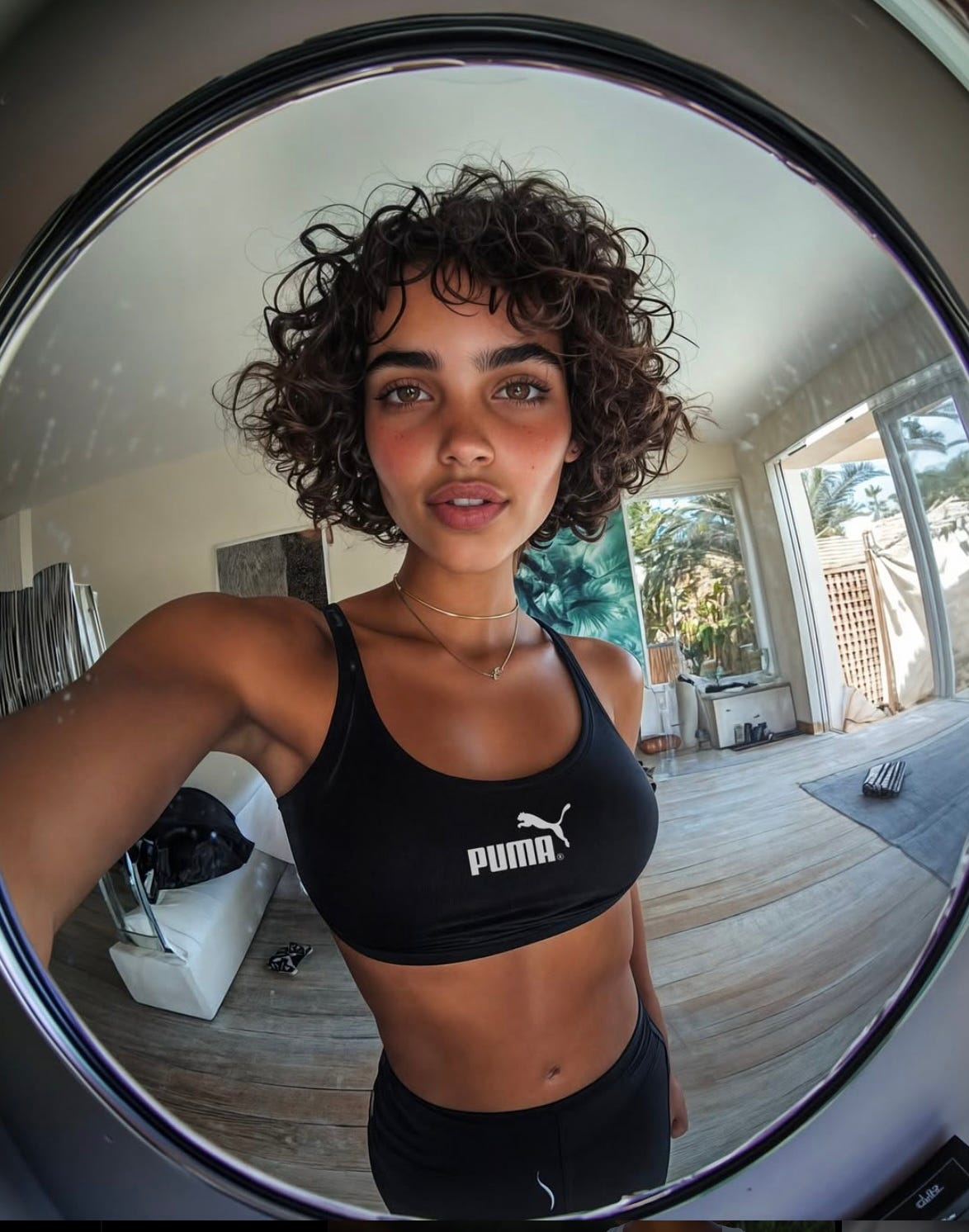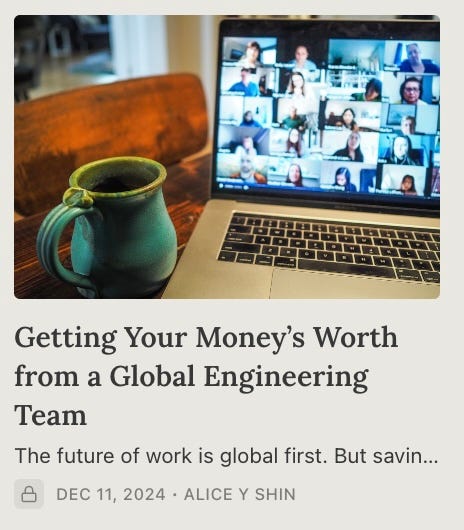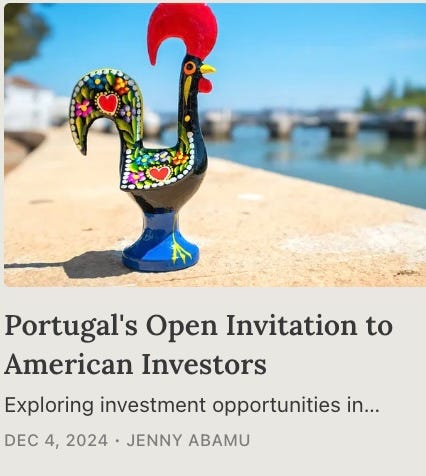The Rise of AI Influencers, Totems, and Beyoncé’s Beehive.
Why Do We Crave Authenticity Yet Flock to AI Influencers? Digital Anthropologist Giles Crouch Explains Our Ancient + Cyborg Tendencies.
Apart from tapas, Barcelona has apparently given the world another export: Aitana Lopez, an AI influencing fitness guru. Think impossibly smooth skin, perfectly flowy pink hair, and proportions that make Disney princesses look downright average. I remember staring at her photo, mesmerized, reminded of the stomach pouch I carry after giving birth to two children. At first, I assumed these were your standard “overly filtered” social media personalities—just more curated than usual. But as I kept scrolling, I realized there was no human underneath the face-tuning apps. These influencers weren’t real people at all.
That realization left me half-fascinated, half-freaked out. I’d been one of those folks who constantly rolled my eyes at influencers for being “fake.” Now, here I was, gawking at every pixel of something literally not human—yet with hundreds of thousands (sometimes millions) of followers. After all the flak we give human influencers for lacking authenticity, how on earth did a completely fabricated personality rise to stardom? Does our need for a flawless idol trump the requirement that it be a breathing person? I wanted answers, and I found them in a chat with a digital anthropologist who pointed out, in the most Canadian-and-British-friendly way, that this phenomenon is just a high-tech spin on something ancient.

AI influencers are surging across social platforms, offering a brand-safe, always-on persona that never sleeps or scandalizes. It seems contradictory, but according to experts, resonates with a historical human tendency to create icons—totems—that embody shared values. What we’re witnessing is the collision of that ancient behavior with cutting-edge tech, opening up a new sphere for brands, marketers, and communities worldwide.
An Evolution in Human Idol Worship
Just regular humans Giles Crouch and I having a conversation on AI influencers and totemism for JAMCQ. I have about 3k followers on X, Giles has about 4.5K on LinkedIn, so AI has us both beat.
It’s not like worshipping celebrities is new. We’ve been doing this for thousands of years—building statues, wearing masks, creating figures to rally around or pray to when life got unpredictable. Giles put a name to it: totemism, this old-as-dirt practice of giving an object or idea (like a carved figure or a killer pop album) enough power that entire communities unite around it. If you’ve ever yelled “Slay!” at a Beyoncé concert, you’ve already joined that club. I’m a card-carrying member of the BeyHive myself, so I totally get the urge to gather en masse around a single iconic figure. When it works, it feels like belonging, but it also feels a little primal—like you’d do out-of-character things in the hive.
Follow us on Instagram and LinkedIn: Connect with us for regular updates, behind-the-scenes snippets, and all the global savvy you crave
Now, imagine transferring that same raw devotion to a digital entity that can’t ever slip up or randomly decide it wants to grow old and retire. AI influencers basically take this centuries-old totem thing and supercharge it. They talk back to us, post flawless content 24/7, and never reveal any awkward details about their personal lives—because they don’t have one.
“Totemism on Instagram is aesthetic, so design means a lot,” explains Giles, noting how the idols are created in each platform. “In TikTok, well, it's more performative totemism. An AI influencer encourages people to sing and dance along, so it's more of an active thing. Twitter or X, that's more what I call conversational totem, totemism. It's more about dialogue. Then there’s YouTube. There it is narrative totemism because they're longer videos. There can be some engagement but not really. It’s the AI influencer creating the narrative, and it's less so about the community.”
Totemism makes total sense: people want icons to believe in, to dress like, to defend in online wars. We used to carve them in stone; now we code them to perfection. And the most mind-blowing part? We’re still showing up with the same fervor, if not more.
Syphoning Marketing Dollars Off to AI

Reports project the influencer marketing industry to be valued at a whooping $24 billion and growing. When you add AI influencers into the mix, the possibilities seem boundless. So how are brands tapping into this totemism?
“People like to relate to brands, but they don't have relationships with them,” says Giles. But AI influencers are changing that.
They allow brands to embody human-like figures, totems, to build direct bonds with consumers.
“What’s interesting is that it’s not so much the influencer that we’re forming a relationship with—it’s the community we create around that influencer,” Giles Crouch explained.
And for many companies, the holy grail is fostering a sense of community— profitable communities.
Giles points to companies like Puma, a German athletic shoe brand. Puma introduced an AI-created influencer with a specific cultural background—an avatar from Morocco—tailored to resonate with sports fans across African and Middle Eastern markets. Why Morocco? Because Puma saw a significant following in these regions and wanted a “spokesperson” who could speak directly to those cultural values and lifestyle aspirations.
And what ends up happening doesn’t stop at official brand campaigns. Communities form organically around these digital figures. People create fan art, build subreddits, launch hashtags, and even craft virtual “meet-and-greet” sessions. While some brand managers fear AI might depersonalize relationships, early adopters find that the opposite is happening. It’s the fan community where the real brand equity builds, providing a sense of belonging that extends well beyond the product itself.
In practical terms, AI influencers can:
Post and engage with audiences 24/7, crossing time zones effortlessly.
Speak multiple languages or vernaculars, broadening brand reach in global markets.
Provide consistent messaging aligned with brand values.
Continuously learn from user interactions, refining their approach to generate deeper engagement.
The lure is clear: a flexible, data-driven persona that can be “enhanced” with a few tweaks in programming. That can be a game-changer for companies looking to scale quickly without risking the next big scandal or falling victim to influencer burnout.
Not All Is Pleasant in Pleasantville.
Beyond the fandom, there are ethical and social concerns, and different cultures are seeing unique challenges. In South Korea’s K-pop scene, fans expect a certain level of innocence and purity. But does an AI influencer take that a step further, reinforcing unrealistic expectations about perfection, body image, or lifestyle? In the West, digital anthropologists worry about manipulated consumerism—an AI figure that entices you to spend more, buy more, or behave in ways you might not otherwise. Meanwhile, data centers powering these AI “personalities” guzzle electricity, leaving questions about sustainability and long-term scalability.
Then there’s the emotional bond. If an AI influencer is perceived as a friend, a role model, or even a romantic figure (because humans have a knack for projection), how do we handle the psychological fallout if it “ghosts” followers or the brand pulls the plug?
“We have to ask ourselves what it means to be human in a phygital world,” Giles said, referencing that blurred line between our physical and digital realities. “If an AI influencer, all of a sudden gets turned off, and people— hundreds, thousands, millions— have formed a relationship with this AI influencer, then it's gone. Do we get depressed? Do we have a funeral? What are the rituals that we place around that?”

We don’t have the guardrails in place to deal with not just a psychological fallout—the risks of suicide, depression, and anxiety. We also don't have the guardrails to deal with cyber crime and how we can be manipulated by these AIs. And that is a real risk for society.
So How Can a Business Use an AI Influencer Effectively?
Start with an Exit Strategy: If you ever retire the AI persona, think about how fans might react. Giles cautions that if people build emotional attachments, shutting the influencer down cold turkey can leave them feeling abandoned—much like a show abruptly canceled without a finale. That can sour your brand’s reputation, or worse cause psychological damage to people so tread carefully.
Explore Cultural “Type” First: Giles points out that cultures fall loosely into “type one” (highly individualistic) or “type two” (collectivist). In the West (type one), personal freedoms and liberties come first, so your AI influencer should highlight uniqueness and personal gain. In places like South Korea or many Nordic nations (type two), a “we-first” approach resonates better—emphasizing teamwork, community values, and shared identity.
Respect Local Norms and Expectations: If you’re launching an AI influencer in a region where fans expect a squeaky-clean public image (like K-pop circles), perhaps understanding and navigating that cultural reality will make it easier for the public to accept and feel safe with your technological human. Conversely, in Western markets, showing a bit of “edginess” might actually drive more engagement, as fans enjoy personalities that stand out.
Customize Communication Channels: Different areas have preferred platforms—WhatsApp or Twitter in one region, KakaoTalk in South Korea, Telegram in parts of Eastern Europe. Tailor your AI influencer’s main channel to the local audience’s habits, make sure it speaks the local language and strategize your totemic behaviors based on the platform.
Want More Content Like This?



Click 👉🏻 to subscribe and build up your cultural intelligence today
The Analysis
I’ll admit, by the time I finished my research, I was both intrigued and tempted to delete every social app on my phone. There’s no denying the marketing goldmine these digital darlings seem to represent. But the speed at which this is all going, the threats to jobs, energy and society are just as poignant as the business opportunities.
Giles pointed out that in the past humans had many decades to adopt and adapt to technology. Today, that’s all out the window.
But take a moment and digest it all. I had to. Just know that the moment you need to take can also leave you feeling a bit further behind.
The Cultural Takeaway
You’re more cultured now because you see that AI influencers thrive not just on flashy tech, but on deep-rooted cultural values. In South Korea’s communal context, they satisfy collective ideals. In Western individualistic cultures, they offer curated authenticity without the risk. They’re modern totems, reflecting the timeless human need for shared stories—only now, our icons can text us back.
Know someone who needs to know this?
The holidays are over but you can still gift a subscription. Thanks for sticking with us! The AI space is buzzing with fascinating developments, and we’re here to keep you in the know.
Want to help us grow? Do us a quick favor and share this with two friends who’d love to stay ahead in the AI game. We appreciate you!






